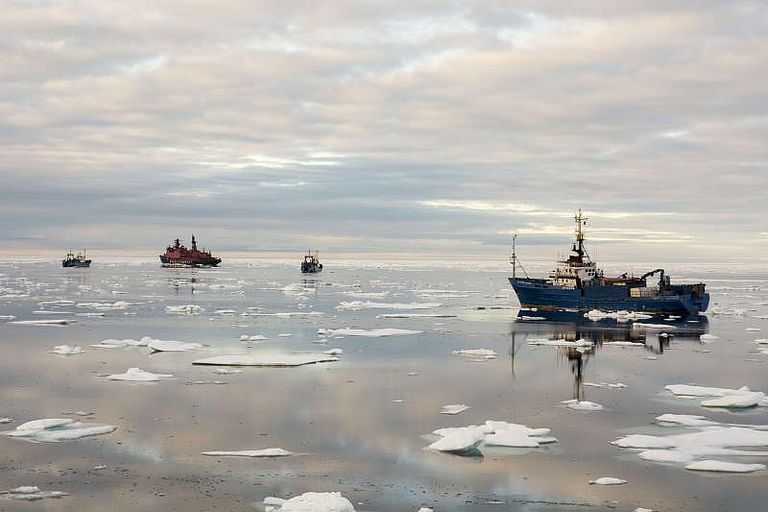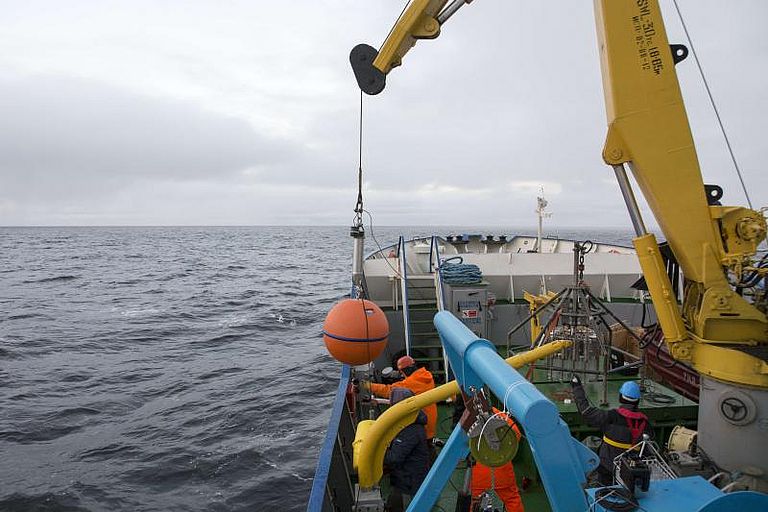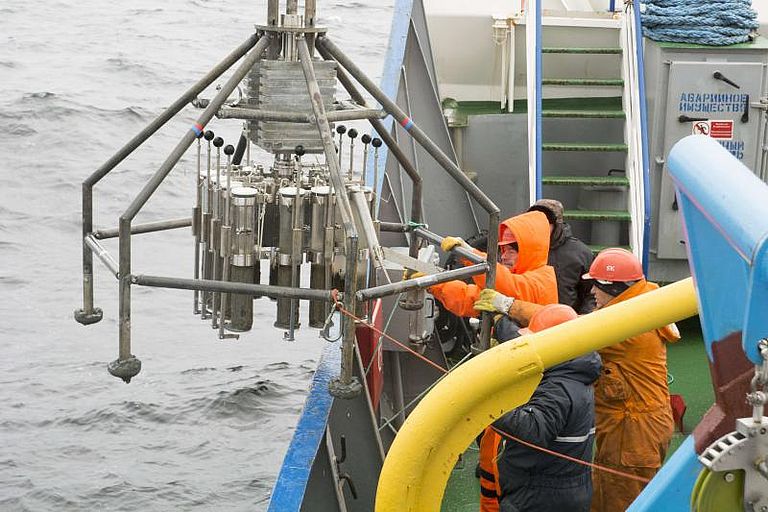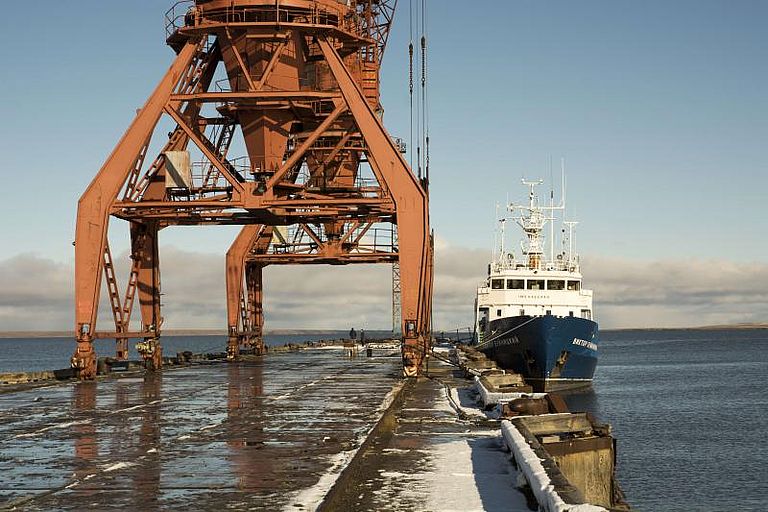Image of the month: January 2015
Research along Northeast Passage
Our image of the month shows vessels in the Siberian Vilkitsky Strait, a strait that separates the Russian mainland from the Severnaya Zemlya archipelago at about 78° N. The picture was taken from onboard the Russian research vessel VIKTOR BUYNITSKIY. With this ship, German and Russian scientists conducted two expeditions to the Siberian shelf seas in 2013 and 2014 to collect data about the impact of climate change in the Arctic. The two expeditions TRANSDRIFT XXI and TRANSDRIFT XXII were part of the bilateral project "The Transpolar System of the Arctic Ocean (Transdrift)", which is funded jointly by the German Ministry of Education and Research and the Ministry of Education and Science of the Russian Federation.
Both expeditions started from Arkhangelsk on the White Sea. In a ten-day transit the VIKTOR BUYNITSKIY sailed through the Barents Sea, passing Novaya Zemlya and the Kara Sea, until reaching the Vilkitsky Strait, the last stage on the way to the actual study area, the Laptev Sea. So the scientists followed the route of the legendary Northeast Passage, which is navigable for longer and longer periods in the Arctic summer because of advancing climate change. In bottlenecks such as the Vilkitsky Strait, nevertheless, barriers of drifting ice can be still found. Therefore, great icebreakers like the nuclear-powered icebreaker YAMAL (here with black hull and red superstructures) accompany the convoys who want to pass the strait.
The Laptev Sea and the other shallow shelf seas of Siberia are of particular importance for the climate, ocean currents, ice formation and the ecology of the Arctic. Therefore, they have been investigated by scientists for many years. Here, for example, a large part of the sea ice is formed, which then is transported with the Transpolar Drift Stream through the Arctic and partially into the North Atlantic. In addition, changes in the water masses and of the biodiversity can be observed in the Arctic shelf seas. The current project is based on many years of joint German-Russian research in which scientists of many different disciplines worked together. The goal is to capture the full extent of change in the Arctic.






